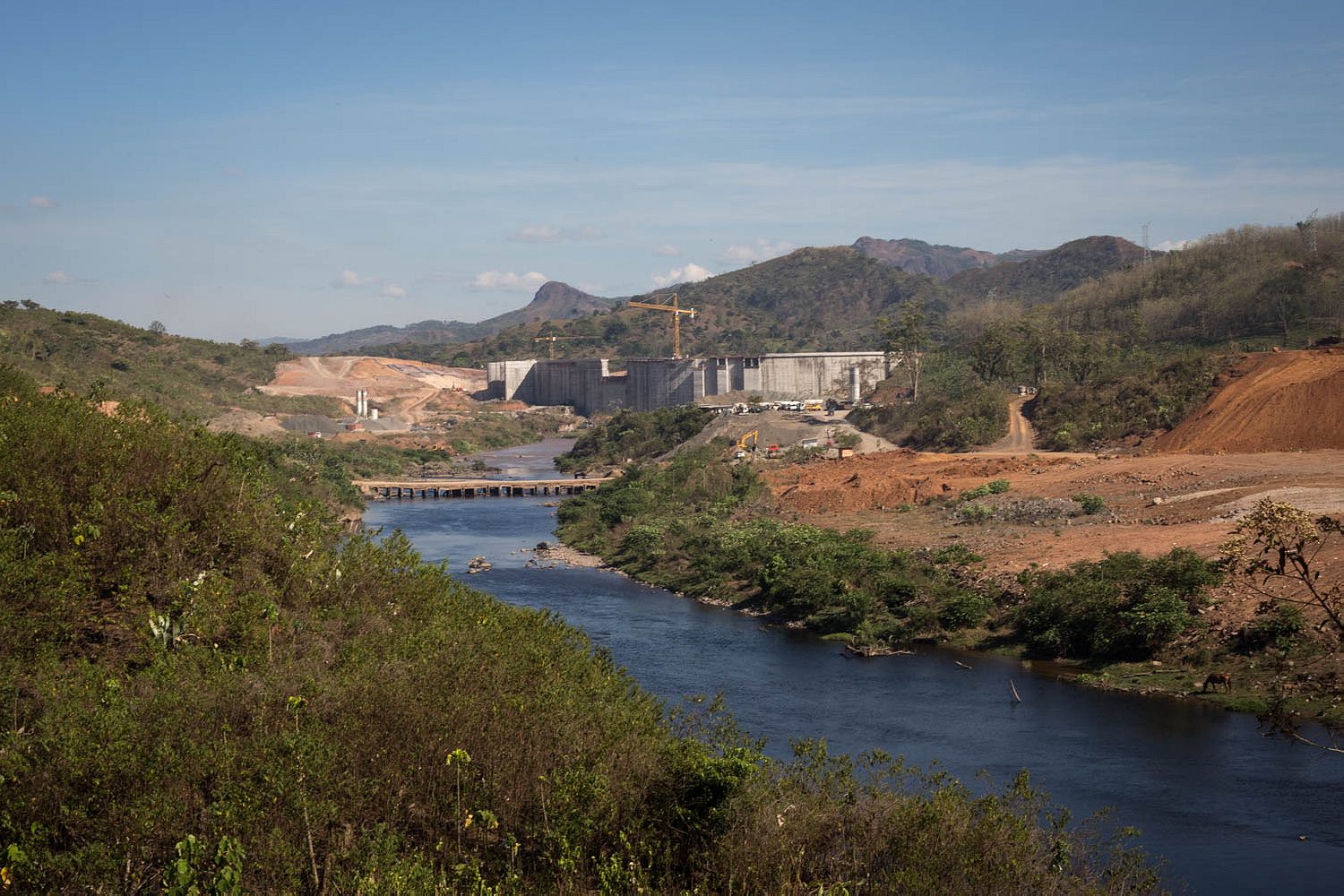Panama’s largest indigenous group battle big business for control of their homeland.
When the sun is strong enough to burn the mist off of the Talamanca Mountains, you can see the Bay of Almirante from the yard of Mariela’s house. Five hundred years ago, Columbus landed in this bay on his fourth voyage, and returned to Spain with enough gold to seed colonial Panama. The only clouds sit low between the mountaintops, the Caribbean Sea shines a bright turquoise below. In the muddy yard, I stand quietly with 9-year-old Yitzel, who is sneaking a break from chores. Her royal blue traditional nagua dress blows in the wind as she smiles at the sight of the ocean, or more likely, the fact that I am covered in mud to my shoulders.
We have just hiked eight hours through dense virgin jungle, across two rivers and several muddy cow pastures. It’s the only terrestrial route, a narrow footpath connecting the Caribbean with the Pacific Ocean. The indigenous people of Panama have been using it for centuries. Too small to see from here is a small port town, Almirante, from which we started hiking this morning. Two more days will take us across the continental divide, and in 4 days we will hit the salty estuaries that begin the Pacific waters.
These mountains looked so close on the map when I booked the five-hour flight from Chicago to Panama City. Then there was the 8-hour drive across the isthmus on the Pan-American Highway, past dusty sugarcane fields, until I reached an unassuming turn off in the road marked by a bus stop with chipping red paint. The intersection of cracked cement has periodically been made impassable over the past five years by thousands of protesters from the Ngäbe-Buglé tribe facing off against Panamanian riot police. The Pan-American is the only throughway in the country, and the protests effectively halt the economy for days at a time.
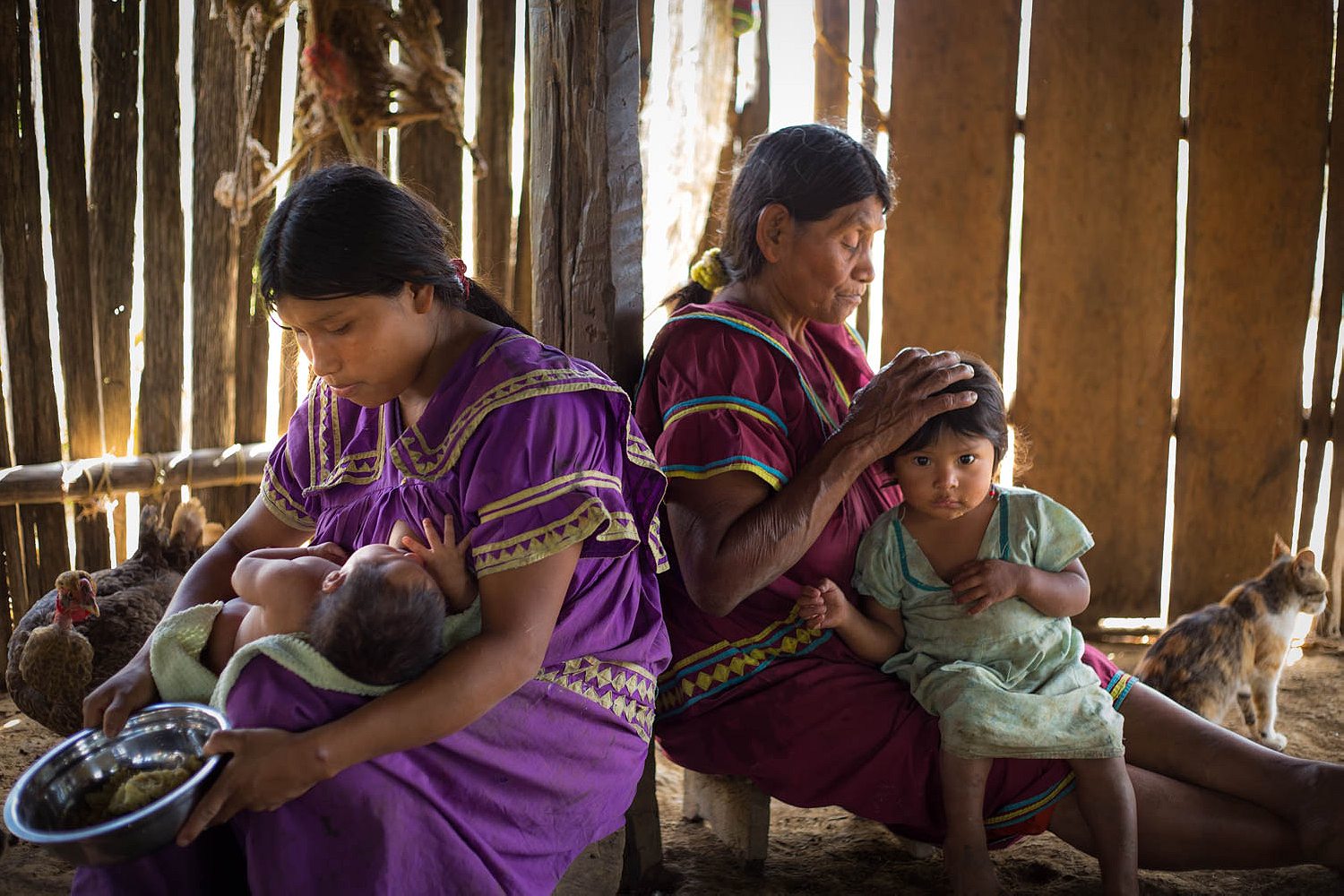
Inside Mariela’s house, there are only a few hints of modern life—plastic jugs and cups, metal cooking pots, plastic bags. A large black radio with long antennae chatters almost constantly. The hammocks and bags of food that hang from the rafters, including the one that cradles tiny newborn Arcelio, are woven from fibers of wild agave and pineapple plants; the wood furniture bears the marks of an ax. As she gently rocks the baby, I ask Mariela why she moved to this remote mountaintop instead of living in one of the villages.
“We were starving in San Felix,” she says without hesitation, referring to a now-densely populated region in the Pacific lowlands. “Here we always have enough to eat.” Mariela and her husband left their large extended family behind, carting a few chickens and their first two children into the wilderness. That was 1980. Mariela gave birth to 7 more children in this home.
The jarring sound of a helicopter calls us out of the hut during morning coffee, its noise gargantuan among the normal hum of wilderness. The family is typically stoic, but their reaction to this extraordinary interruption is markedly unflinching as they scan the sky. This is the now-common arrival of their new neighbors.
“They are very rich. They are not nice,” Mariela’s son tells me matter-of-factly, before turning to scoop up a young piglet due for vaccinations. He encountered the foreign property owners on his way to Costa Rica this year, where he and his brothers now walk annually to labor as migrant workers during the coffee harvest. The need for cash is of growing concern for the family, but the multi-day hike doesn’t bother them. They are proud of their once-nomadic history and a geographic domain that spreads far beyond modern national borders.
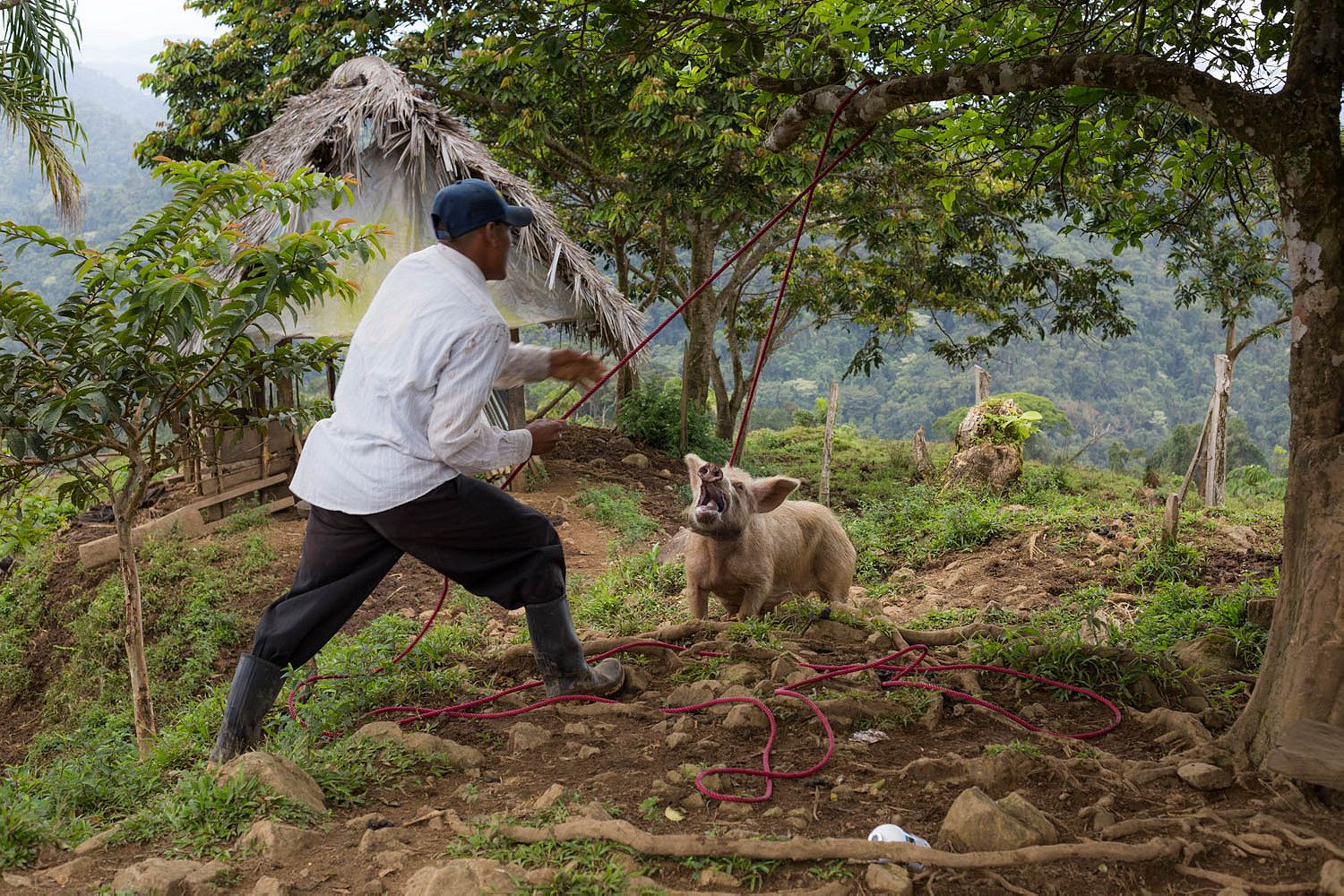
Numbering 250,000 and growing, the Ngäbe-Buglé is Panama’s largest tribe. Although they are the least likely to be plastered on shiny brochures advertising Panama’s booming tourism industry, they are a force as influential as Panama’s expanding canal and monkey-filled rainforests.
The Ngäbe-Buglé (formerly two tribes, the Ngäbe and Buglé), descend from the Maya, and were once two of numerous warrior-led nomadic chiefdoms who lived across the entire isthmus of Panama and beyond in pre-Columbian times. When the Spanish began to settle in the early 1500s, disease nearly rendered the tribes extinct. In diminished numbers the Ngäbe and Bugle fled their privileged coastal encampments for the densely forested Talamanca mountain range, eventually assimilating into one tribe (though maintaining two distinct languages).
For decades the cordillera was considered worthless and impassable by the colonists, and the Ngäbe-Buglé were left in peace. They developed subsistence-farming methods for the tough mountain soil, and lived in extended-family hamlets. Society was ruled by kinship practices instead of currency: men planted and harvested in groups, moving from one family’s plot to the next until the whole network of kin was taken care of. They grew rice, corn and bananas, fruits and vegetables, hunted wild game and fished the rivers. For about 400 years, life was not easy, but it was possible. Those days are over.
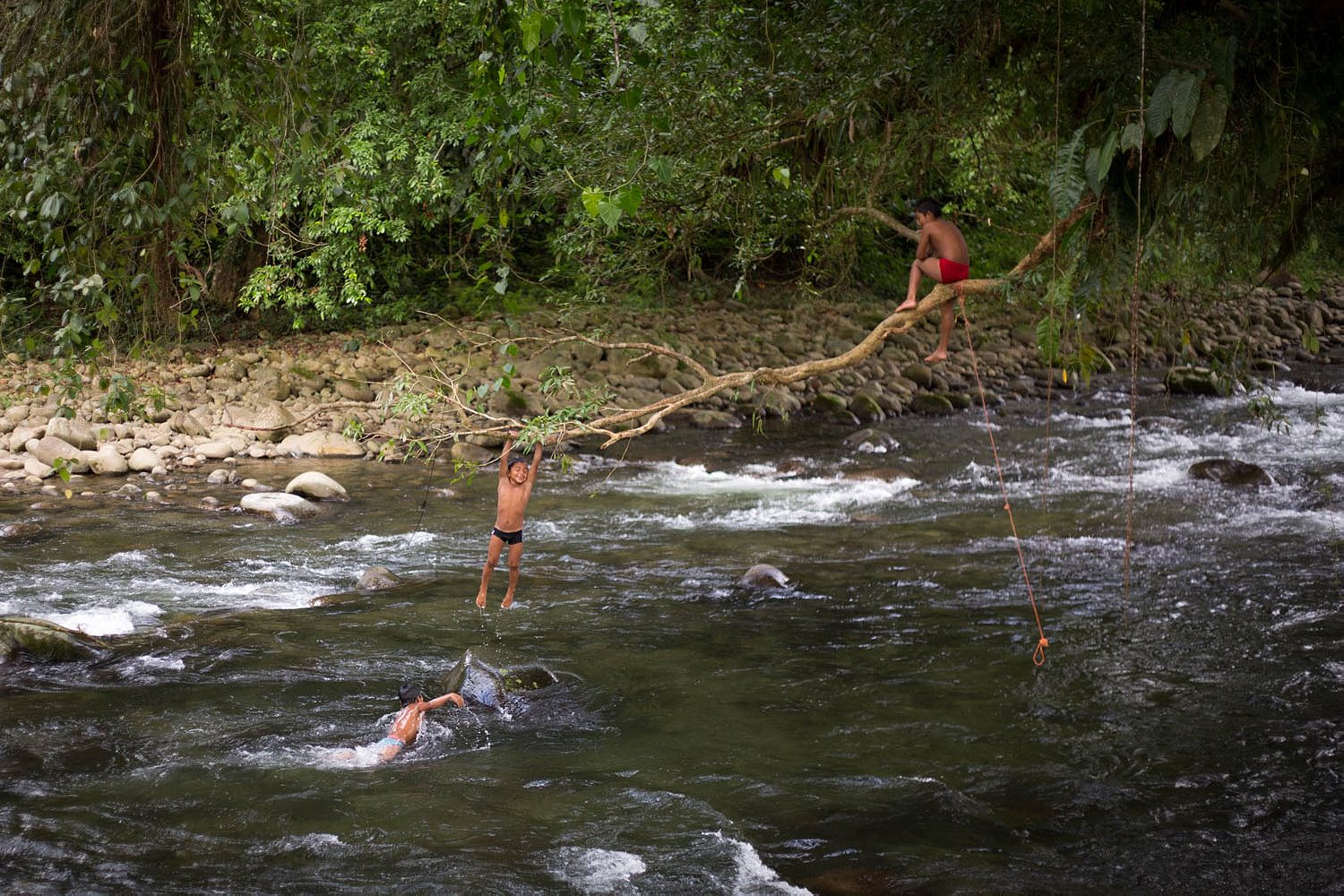
The Ngäbes have outgrown their land, forcing induction into the cash economy. Their traditional life is slowly caving to new means, and a painful question of identity weighs on the consciences of Ngäbes as they hike for days to participate in migrant labor.
A few days after a visit by foreign developers doing some preliminary research for a dam on the Dos Bocas river, I asked Julio Quintero, a tribal healer, what he thought about damming the river. He took his time as we walked through the jungle gathering medicinal herbs, before finally turning to answer my question: “The forest gives us everything we need, so why do we ruin it?”
Even now, are no roads crossing the Ngäbe-Buglé comarca (a reservation), and the steep mountains, often too precipitous even for horseback, must be crossed by foot. This is by choice: for decades the Ngäbe have resisted roads, not only because they prefer their traditional life in the forest, but because the roads are offered as infrastructure for large mining and hydroelectric projects.
In Ngäbe villages, life often looks the same as it has for hundreds of years, without electricity and running water, but with hardworking farmers and tight family networks. Since the Pan-American Highway brought a new wave of colonialism in the form of real estate investors and resource developers after the rich deposits of gold and copper and powerful rivers, the tribe has had to adapt drastically, and reluctantly. Over the past 100 years, the Ngäbes have worked to define the cultural structure that allows them to preserve their way of life, exert political influence and make progress.
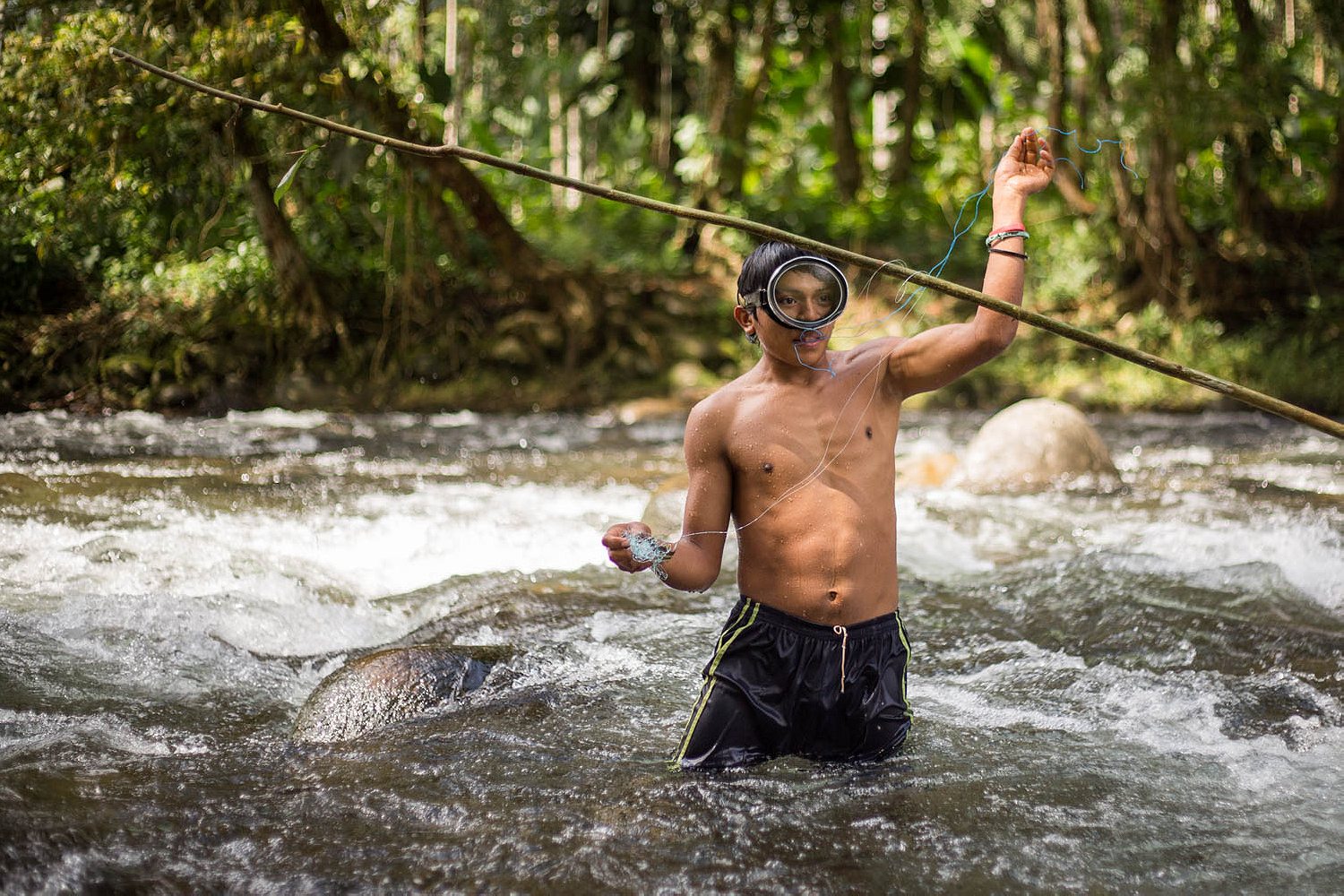
The story of the Ngäbe-Buglé is not one of a remote people clinging stubbornly to ancient traditions. It’s a story about creating new traditions that will allow them to remain a united culture in a modern world. Geographically dispersed and with no way to organize, the Ngäbe-Buglé have formalized their written language, developed a tribal council and invented a new tribal religion.
In 1961, a new religion arose (inspired by abandoned missionary efforts) and was adopted almost unanimously by the tribe. The Mama Tada religion originated when God appeared to a Ngäbe woman named Besiko in the form of a white man on a motorcycle (referred to by many in the tribe as Jesus) with a virgin wife.
Although the story varies, even among religious leaders, the main tenet of the religion is consistent: preservation of Ngäbe tradition in order to be able to defend what is ancestrally theirs. The Mama Tada leadership are key players in Ngäbe politics (arguably wielding greater influence than the chief) and have their own police force. Missionaries have converted many villages at the fringes of the comarca, but an estimated 50% of the tribe follow Mama Tada.
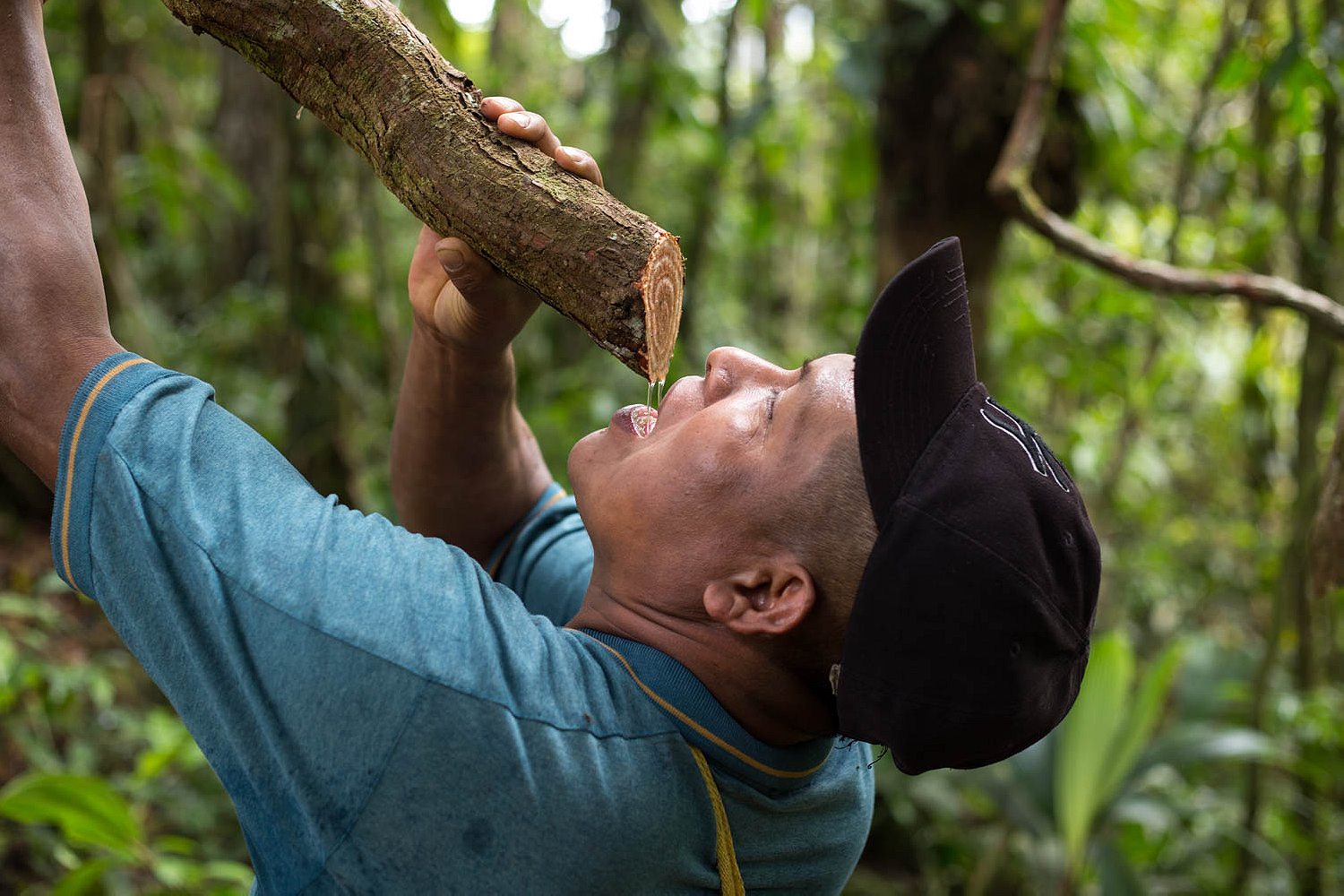
A second message from God came in the 1970s, revealing the written form of Ngäbere. In the small village of Kiad, which serves as a cultural center, a Mama Tada teacher offers to show me the scroll, as long as I put my camera away. A copy of the writing as God drew it in the dirt is drawn in magic marker on loose leaf paper held together with scotch tape. It looks like a hybrid of hieroglyphics and Arabic, and wraps in a circle around drawings of Ngäbe farming and hunting. Tribal leaders are trying to teach the writing in schools throughout the comarca – a difficult task, as the schools are government run and the majority of the tribe’s adults are illiterate. Yet for the first time in history, some Ngäbe children can write in Ngäbere.
Across the comarca, Ngäbe are entrenched in ongoing battles with the Panamanian government and foreign corporations building mines and hydroelectric dams. A dam just outside the comarca has flooded villages for miles upriver, displacing hundreds of people. Such tragedy has become common over the past two decades in the race to feed Panama’s growing economy with electricity. In response, sleepy Ngäbe farming culture has risen up in defense of itself.
The small town of Tole sits at the entrance of the comarca on the Pacific side and serves as a terminal and commercial center for inland villages. Ricardo Miranda, a leader in the Ngäbe fight against the Barro Blanco dam stays in the back shed of a Latino family when he is in town. His village, Kiad, is a three-hour walk away.
Tonight, his family arrives one by one from Kiad as evening falls, and we sip heavily sugared coffee and snack on boiled yucca before everyone finds their own little corner of the concrete floor to sleep on. I nearly have a heart attack as the loud blades of a helicopter descend at 5 am, becoming so loud that it feels like the small cinderblock structure will explode. I trip on my tangled sheet as I rush outside with the Miranda family to view the invasion.
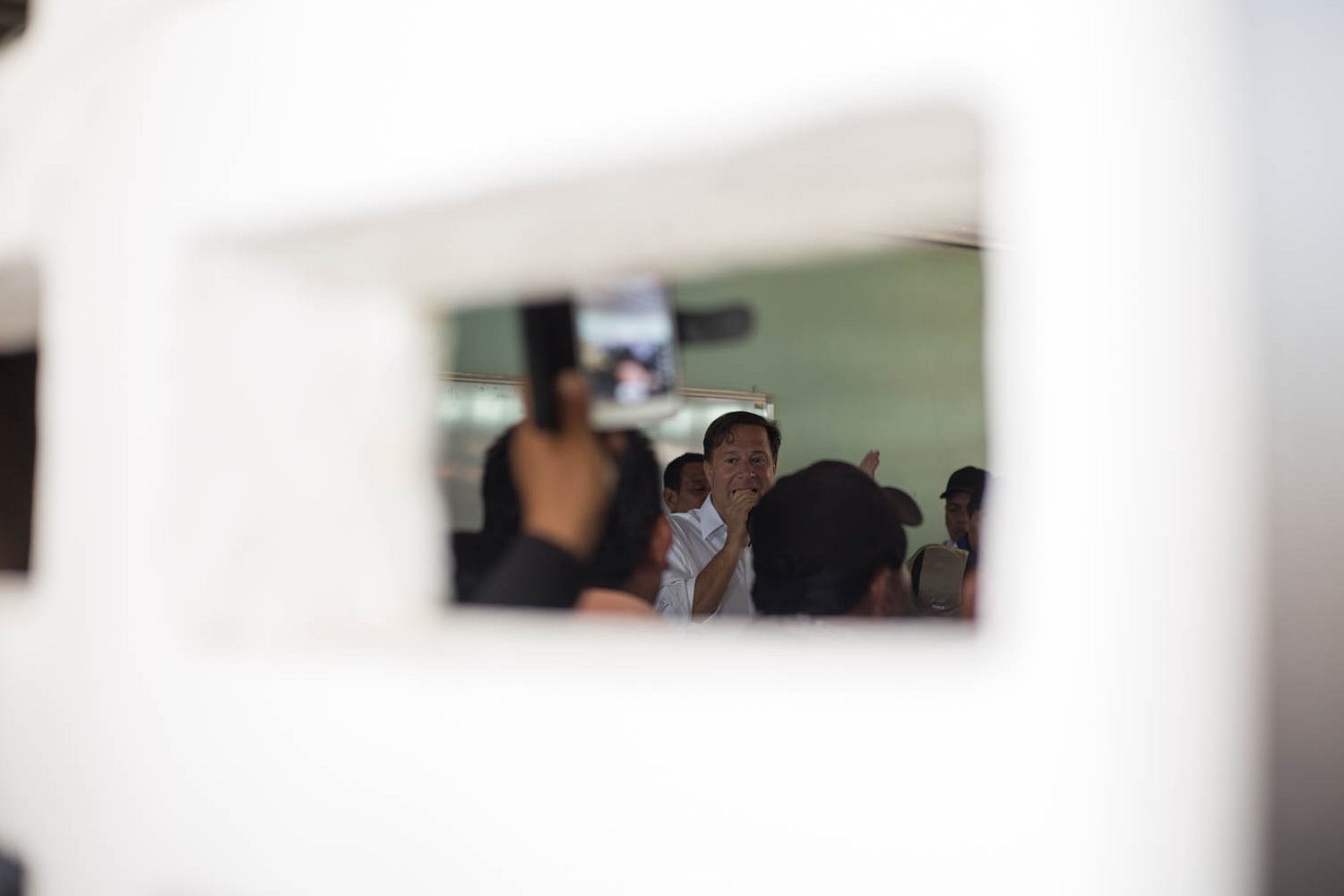
The Presidency has arrived from Panama City. A shiny chopper sits in the middle of the road, as big as the cinderblock homes that line the street. Today is the third ‘Table of Dialogue,’ a United Nations-moderated discussion between the Ngäbe-Buglé, the Honduran company that owns the dam, and the government of Panama.
Ricardo has spent 18 of his 32 years as a key spokesperson against Barro Blanco, a hydropower plant under construction on the Tabasara River. Once complete, the dam waters will completely eliminate his village Kiad, and two other villages. Over 400 Ngäbe-Buglé will be displaced, their homes and farmland inundated. An estimated 3,500 will lose farmland, hunting and fishing grounds, and access to fresh water. Four petroglyphs—protected national monuments—will also be flooded. The tribe is already short on farmland, and the affected people will have nowhere to go. The villagers say they were not consulted, and were offered no compensation.
By now, Ricardo is no stranger to political negotiations. Wearing a pink dress shirt adorned with the Ngäbe ‘dientes,’ a triangle pattern that represents the snakes, rivers and mountains of the land, he graciously greets Vice President Isabel Saint Malo with a kiss on the cheek as a dozen reporters capture the moment.
There were five of these meetings in the first three months of 2015, not one led to an agreement. The Ngäbes are unwavering that the only solution is cancellation. But the dam is 98% complete. If the project is canceled, the government will be responsible for the $125 million investment, and their reputation with foreign investors will be damaged.
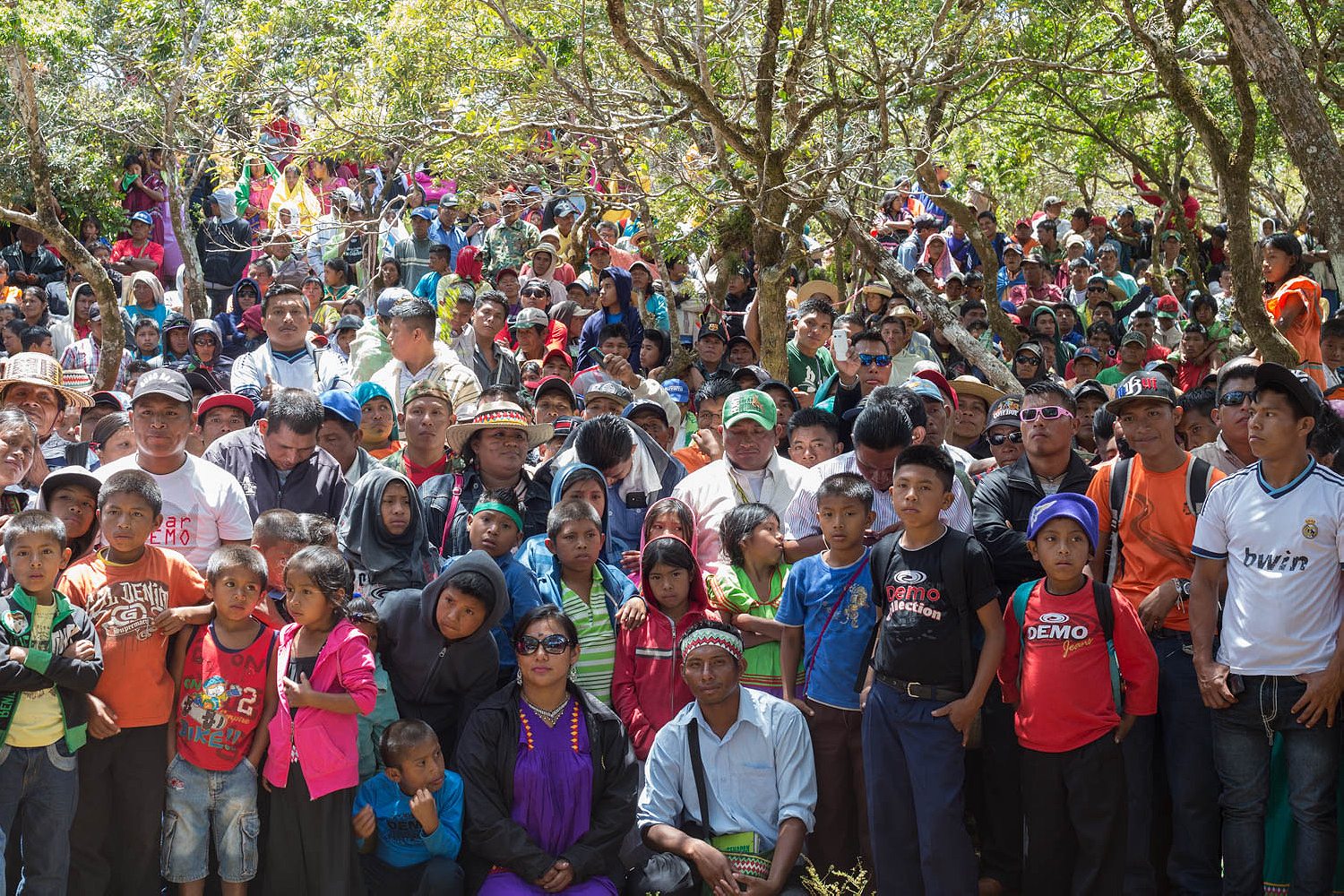
This summer, with no political solution in sight, the Ngäbes decided to protest on the highway. One afternoon, Ricardo stood at the front of the protesters. Within minutes, his cell phone rang – it was the Vice President.
For a few hours, they went back and forth with these calls, and eventually, Ricardo called the protests off the highway: “They want to talk, okay, okay we’ll talk again,” Ricardo said with a smile and casual shrug of his shoulders. He was raised on this game.
He fields dozens of calls a day from politicians, organizations, journalists and citizens. The Vice President always answers his calls. Today, he’s trying to show me the dam construction site: work is supposed to be halted.
She can’t get him access until tomorrow, so we bypass the gatekeeper and walk through the forest. He wears a headband adorned with dientes, a purple polo shirt, black basketball shorts, and his nicest dress shoes. It’s mid afternoon and the equatorial sun is beating down as we walk the red dusty road alongside the dam construction. The water swirls a thick brown from the construction debris, and the forest that normally shades the banks is cut short a half a mile back, and replaced with 3-story high piles of materials. “The river is a shortcut, do you want to take it?” he asks. Nothing sounds better.

Just beyond the backhoes dredging rock from the river, we wade through the clear cold water, my hot skin and irritability immediately soothed. A horse and her foal are watching us from the banks, and run off into the green wall of forest. About 20-minutes from the dam, we reach the Ngäbe encampment.
Aside from concrete fortress of Barro Blanco down the river, everything feels comfortable and familiar. We step into a shady hut where a three-stone cooking fire burns, and are offered coffee. Little girls in nagua dresses giggle at my foreignness, men arrive with fresh cut firewood, and Ricardo catches up on gossip in Ngäbere. Cool winds blow in off the river, where a group of women are washing clothes.
The day’s chaos seems far away and time slows down. Today, the river flows freely towards the Pacific and the forest provides all that the Ngäbe need. In upcoming months, the group at this camp will find themselves on the highway, standing in defense of a land that saved them from extinction. The Ngäbe-Bugle have been protesting the Tabasara River dam for 18 years now, but it is only one of 61 dam concessions in Chiriqui province alone, and the Ngäbe comarca crosses three provinces. This is just the beginning.
